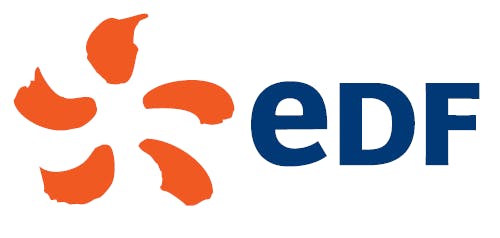3.1.1.4.5 Management of intermittence and flexibility
See section 3.1.4.2.2 “Better management of intermittence, flexibility and storage development”.
3.1.1.5 Roadmap for reducing the Group’s indirect GHG emissions
| Topic | Action | URD Sections | Impact on the low- carbon trajectory * |
|---|---|---|---|
| Emissions from the purchase of electricity for resale to end consumers | Emissions from the purchase of electricity for resale to end consumers Action Greening (use of renewable energy PPAs) of purchases of electricity for sale to end customers in countries where electricity has a high carbon intensity |
Emissions from the purchase of electricity for resale to end consumersURD Sections3.1.4.2.3 | Emissions from the purchase of electricity for resale to end consumersImpact on the low- carbon trajectory * ~- 15 % |
| Emissions from gas combustion sold to end consumers (use of products sold) | Emissions from gas combustion sold to end consumers (use of products sold) Action Support to gas consumers in their transition towards energy sobriety, energy efficiency, and the reduction of their emissions via Group offers, expertise, and subsidiaries, in particular by promoting alternative solutions to fossil fuels |
Emissions from gas combustion sold to end consumers (use of products sold)URD Sections3.1.4 | Emissions from gas combustion sold to end consumers (use of products sold)Impact on the low- carbon trajectory * ~- 60 % |
| Employee travel | Employee travel Action Reducing emissions from employee travel, particularly in view of the new Group Travel Policy |
Employee travelURD Sections3.2.4.3.3 | Employee travelImpact on the low- carbon trajectory * < 1 % |
| Investments | Investments Action Divestment from non-controlled carbon production assets |
InvestmentsURD Sections
|
InvestmentsImpact on the low- carbon trajectory * ~- 25 % |
* Contribution to achieving the goal of reducing Scope 3 emissions by 20% between 2019 and 2030.
3.1.1.6 Use of negative emissions solutions
3.1.1.6.1 Policy
For the EDF group, use of carbon offsetting is the final stage of a process to achieve neutrality, based on the “Avoid-Reduce-Compensate” approach. Carbon offsetting must not under any circumstances take the place of a strategy designed to drastically reduce the Group’s emissions, whether direct or indirect.
The EDF group is focusing on the use of “negative emissions” projects to offset its residual emissions by 2050, compared to “avoided emissions” projects. This can include technological solutions, such as Bio-Energy with CO2 Capture and Storage (BECCS), or natural solutions, such as carbon sequestration in forests and soil.
In accordance with current carbon compatibility rules (1), emission credits from carbon offsetting are not deducted from the EDF group greenhouse gas report and are accounted for separately.
3.1.1.6.2 Group key performance indicator
EDF is working with SBTi on methodology to align the performance indicator with SB methodology.
In the meantime, the Sustainable Development Department has finalised a memorandum of application for all Group entities with the aim of establishing EDF group governance principles for carbon offsetting, more specifically carbon credit redemption. It also establishes reporting methods for entities using offsetting practices (reporting on Sustainable Development Committee (2)).
The Group has decided to use a “transitional KPI” between the end of 2021 and the end of 2022: the rollout rate for the guidance on carbon offsetting solutions within Group entities (3). For the methodology used for this indicator, see section 3.6 “Methodology”.
Deployment rate of the framework guidelines on carbon offset solutions (%)

- 2019 : -
- 2020 : -
- 2021 : 50
- Target 2023 : 100
(1) GHG Protocol Corporate Accounting and reporting Standard, WRI-WBCSD, 2015.
(2) See section 3.5.2 “CSR governance bodies”.
(3) For the methodology used for this indicator, see section 3.6 “Methodology”.
